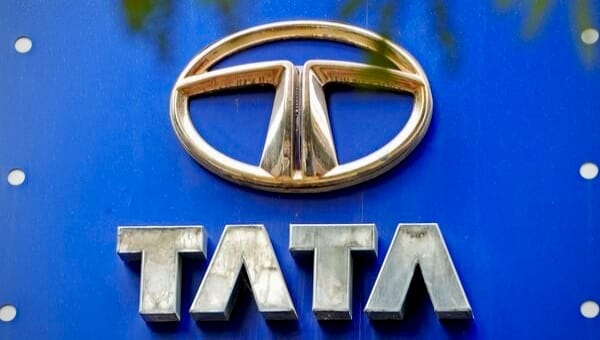
Adani Ports’ logistics arm on Friday unveiled plans for a dramatic fivefold revenue expansion to ₹14,000 crore ($1.7 billion) by fiscal 2029, intensifying the infrastructure race as India’s booming consumption and manufacturing reshape national supply chains.
This audacious revenue target marks one of the most ambitious bets on India’s logistics sector in recent memory. Investors recognize this move as a high-stakes wager on India’s policy reforms—most prominently, the National Logistics Policy (NLP)—and the country’s capacity to overhaul a sector historically constrained by fragmentation and inefficiency. “India’s $250 billion logistics landscape is at an inflection point, and growth rates of this magnitude will test even the most seasoned operators,” said Nalin Mehta, managing director at Transport & Logistics Council, who has tracked the industry since the 1991 liberalization.
Adani Ports and Special Economic Zone Ltd. (APSEZ) expects its logistics revenues to jump from the current ₹2,800 crore ($340 million) to ₹14,000 crore by 2029, implying a compound annual growth rate above 38%. The plan’s credibility partly hinges on APSEZ’s announced ₹10,000 crore ($1.2 billion) capital commitment over five years—an investment earmarked for rapid expansion of rail assets from today’s 75 rakes to 200, and scaling warehouse space from 5.5 million square feet to more than 100 million. Executives say this scale-up is a deliberate play to capture volume in an economy where manufacturing and consumption are rising at a 6.5-7% annual clip, as reported by the Reserve Bank of India and Ministry of Finance.
“These are the contours of a new logistics era,” said Ashish Gupta, Chief Strategy Officer, Adani Logistics. “Our objective is clear: establish the undisputed leadership position in integrated end-to-end logistics, powered by the Adani Group’s port-centric network and capital strength.” APSEZ’s vision positions it uniquely for scale, according to industry veterans who recall landmark government moves such as the rollout of the Goods and Services Tax (GST) in 2017, which redrew the sectoral landscape by enabling cross-state supply chain integration.
The strategic push aligns with national priorities. India’s National Logistics Policy, launched in 2022, set an explicit goal to cut logistics costs—pegged at 13-14% of GDP—into the single digits, in line with global benchmarks. Senior policymakers argue this is essential to boost export competitiveness and unlock $500 billion in incremental economic value over the next decade. “The momentum under NLP, together with infrastructure thrust via Gati Shakti, is the backbone that may finally deliver long-promised structural gains,” noted Dr. Rhea Sharma, Chief Economist at Axis Capital, who studies the direct economic benefits tied to logistics reforms.
Veteran investors point out execution risk remains formidable. India’s logistics sector remains notoriously fragmented, with millions of small-scale operators and patchy technology adoption. Integration—melding rail, road, sea, and warehousing at scale—is a challenge rarely achieved outside of global giants such as DHL and Maersk. APSEZ, by leveraging its port-to-hinterland pipelines and capital access, believes it can surmount barriers that have stymied even deep-pocketed global rivals entering India’s market in previous decades. “This strategy’s success hinges not only on financial firepower but sustained execution, discipline, and technology-led orchestration—lessons learned by those of us who navigated the liberalization and GST transitions,” said Sameer Shah, veteran logistics portfolio manager at Axis Mutual Fund.
This scale of investment will predominantly fund three prongs: massive rail asset addition, exponential warehousing expansion, and the development of at least 10 new multi-modal logistics parks in key industrial and consumption hubs. The parks—designed to offer rail sidings, customs clearance, racked warehouses, and truck terminals within integrated campuses—are modeled on international benchmarks and are projected to catalyze efficiency gains for companies in key client segments: auto, agriculture, e-commerce, and fast-moving consumer goods.
Seasoned analysts and policymakers who’ve observed the sector across decades contextualize Adani’s ambitions within a broader historical arc. During the 2000s, infrastructure developers such as Gati and Container Corporation of India drove initial sectoral consolidation, though with slower growth rates and limited multi-modal linkages compared to the proposed scale today. “The difference now is the multiplier effect from digitalization, GST harmonization, and capital markets deepening,” observed Anirudh Nair, Head of Logistics Practice at KPMG India.
Building and maintaining such integrated assets brings twin challenges: maintaining high utilization rates and controlling operating costs. Market participants are watching closely to see whether Adani Logistics can strike this balance, particularly as e-commerce giants increasingly demand precision, not just scale. The pattern echoes global logistics consolidation witnessed in the US in the aftermath of the 2008 financial crisis, where scale and technology determined the survivors.
Even as APSEZ touts its port-to-hinterland differentiator, scrupulous observers note that true competitive advantage will be tested as rival Indian conglomerates and global players accelerate their own logistics rollouts in the next 18-24 months. “The coming two years will separate those with genuine integration from those with a checkbook, but little systemic agility,” added Mehta.
Outlook for the sector is buoyant, if not without risk. Supply chain veterans who managed through the 1991 reforms and 2017 GST rollout agree: structural tailwinds are clearer now than at any stage in the country’s modern economic history. As the logistics market races toward $380 billion by 2030, per projections from the National Skill Development Corporation, execution, not vision, will shape the eventual winners. History suggests only a handful will capture outsized returns when capital and policy tailwinds converge so favorably.
If Adani Logistics delivers on its aggressive playbook, it could redefine competitive positioning across Indian logistics. Whether it ultimately claims undisputed leadership will depend on execution, adaptability, and the ability to translate scale into sustainable national efficiency gains—a test seasoned markets have learned never to underestimate.







